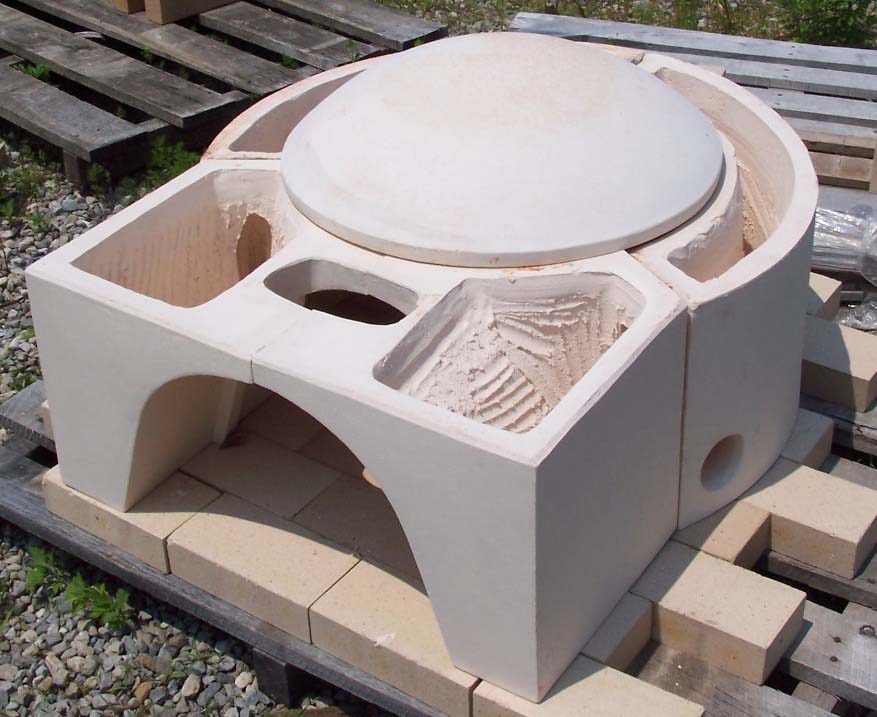I've been thinking about what to do about sales and regulation in California. Our sales of Rumford fireplaces in California is only a fraction of what it was a few years ago and it's only in part due to the economic downturn. Our sales elsewhere didn't drop as low and are already on their way up.
So, what to do? To begin with here is the situation as far as I know it …
Bay Area
We basically cannot sell any fireplaces in the Bay Area regulated by the BAAQMD. Regulation 6 is not so bad. It requires testing to ASTM E2558 and EPA determination of "qualified". It would also seem to allow any fireplace fitted with gas logs - which was our original back-up plan.
But the BAAQMD disingenuously manages the regulation as a ban so that in four years, of the seven or eight fireplaces (twenty some models) tested and found to be qualified and listed on the EPA Burn Wise list none have been approved.
Los Angeles
Regulations by the South Coast Air Quality Management District (SCAQMD) in the LA area have been developed more recently and, although they were aware of the EPA Voluntary fireplace program and had a "place holder" for it, they seem to have forgotten that and now operate pretty much like the BAAQMD. The LA area does have some exceptions for fireplaces at high altitude and they are friendly toward gas logs since a couple of big national gas log manufactures are in the area.
Rest of California
Some other areas regulate fireplaces - notably Northern Sonoma County, Tahoe and San Luis Obispo. These areas seem to be taking their cues from Northern Sonoma county or the BAAQMD.
What really happens
Sometimes our customers get permits in these areas if they have money and/or lawyers or at least seem to be serious by following good "dealing-with-bureaucracies" procedures as outlined hereThere is some rebellion even among plans examiners at having to enforce air quality rules. Napa County approved an Isokern on the EPA list even though the BAAQMD did not.
What to do?
Lawsuit?
The suit we brought against San Jose and Palo Alto in 1999 might seem a Pyrrhic victory but it bought us five years during which many areas allowed Rumfords, not because they thought or cared that Rumfords were clean-burning, but because we had the resources to sue.
We may not think it worth the money now to sue the BAAQMD. But now there are seven or eight other manufacturers whose fireplaces are not being approved, plus gas log, fireplace screen manufacturers, et.al. that might be interested in joining forces.
Public Relations
Whether or not we would ever sue the BAAQMD, just mounting public relations campaign by getting articles in the media and contacting relators and our many architect, builder and mason customers, might be a start. Maybe we could use an "Open Records law" or the Freedom of information Act to find out how the BAAQMD really works. Maybe we could go for a referendum - up or down on fireplaces - or talk with legislators about changing the state rules regulating the BAAQMD to allow local city and county governments to decide. Whatever we do the point would be to get the issue out in the open.
We have not tested Rumfords to the ASTM E2558 standard although I'm reasonably sure they would pass. Until some fireplace is approved - any fireplace - we think it's not worth the time and money to test and jump through the EPA hoops. (The EPA. by the way looks downright reasonable compared with the BAAQMD and the rules in Northern Sonoma County and San Luis Obibpo.) We would also be interested in partnering with any gismo, like the catalytic combustor if it would get us approved without testing.
Importance and high priority
Other states like Colorado and Arizona have fireplace regulations or bans. We may be more successful in starting in one of these states but it does seem that California is perceived as the trend-setter or leader in air-quality regulation. There is also the possibility that fireplaces will be swept into the New Source Performance Standard (NSPS) that regulate wood-stoves - maybe good for us in California where we have little to lose but not so good in New York, Texas or Chicago.
Alternatives
We could just focus sales in areas that don't regulate fireplace emissions. But we would risk being blind-sided by future local regulations and possible NSPS national rules if we are not in the game. I think again of all the good that lawsuit did us to put the regulators on notice that we can't just be regulated out of business without fight.
We could work to develop a UL listed EPA approved (as a stove) version of a Rumford. Seems to me sort of like re-designing a toaster to boil water more efficiently, fireplaces and stoves are so different. We could also come out with a dedicated gas Rumford as Isokern has done but that seems to me to require UL testing, sealed doors and conspicuous labels if we are to avoid violating the National Fuel Gas Code and create a health and fire hazard for our customers.
Bottom line, we have some resources, not the least of which are our customers. I also think the EPA and many local building officials would be on our side. I think we could start a public relations campaign and see where it goes. Currently we have a builder who has a new house with a couple of Rumfords he wants to build in Sonoma County. He would probably welcome a reporter from a local newspaper to accompany him as he tries to get a permit for the Rumfords, asks what the rules really are or tries to settle for installing gas logs.
Jim Buckley
ps: please comment or send me an email at buckley@rumford.com




